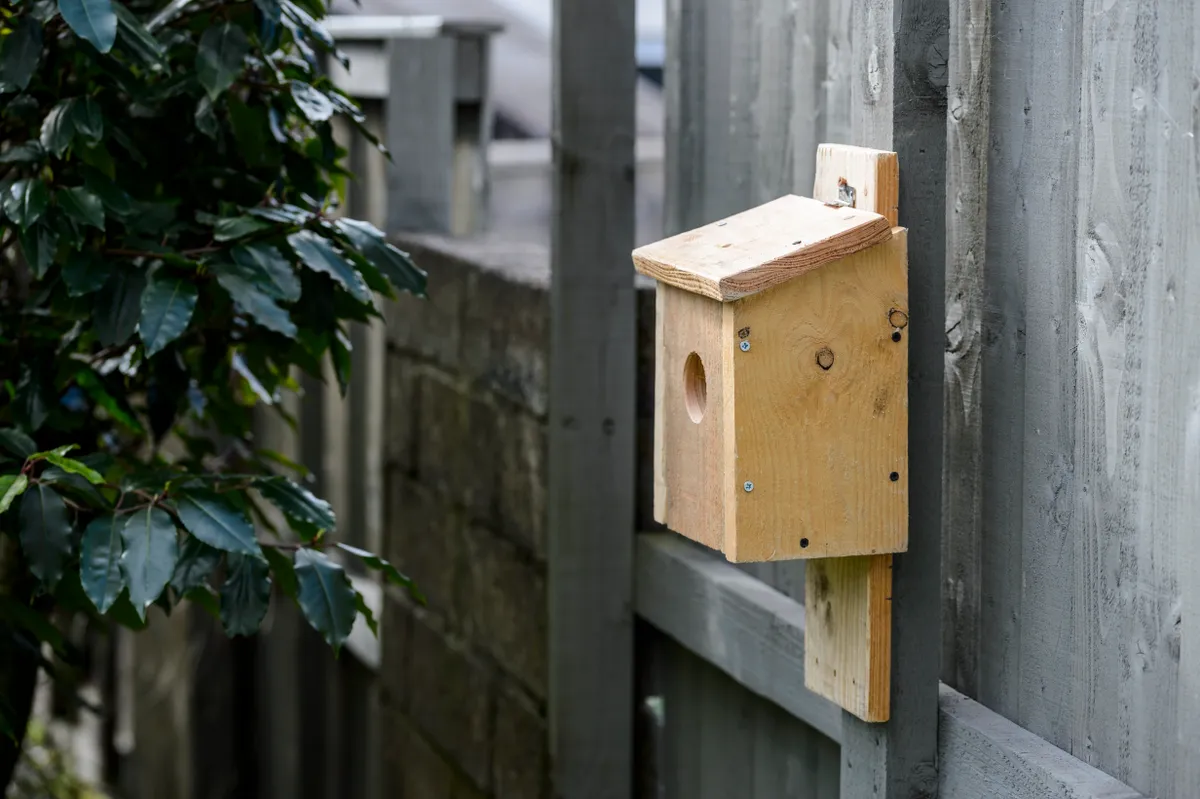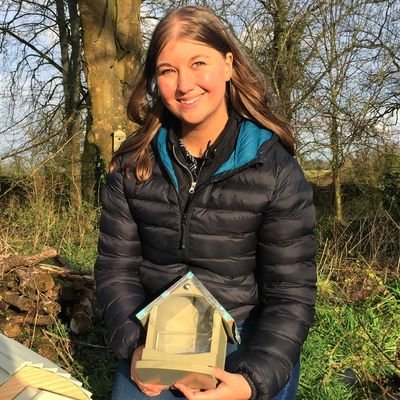This project keeps things simple, as you only need one plank of wood and a few tools. The design and proportions can be adapted depending on the tools and materials you have to hand; for instance, if you don’t have a hole saw, you could instead halve the height of the front piece and use it to create an open-fronted box (pictured below). If you aren’t comfortable using hand tools, ask a friend to help you hold the pieces steady as you screw them together.
Learn even more about nestboxes for garden birds in our online guide, including where to put them up, and how to clean them during winter.
What are the different types of bird nest boxes?
Nestboxes create the conditions that a bird seeks in nature. This article focusses on a standard round-hole box design; the size of the hole will determine which types of birds can enter. Other nest box designs are more specialised, with a particular size and shape to fit the natural nesting behaviour of the bird, such as boxes for tawny owls or swifts.
Round-hole box
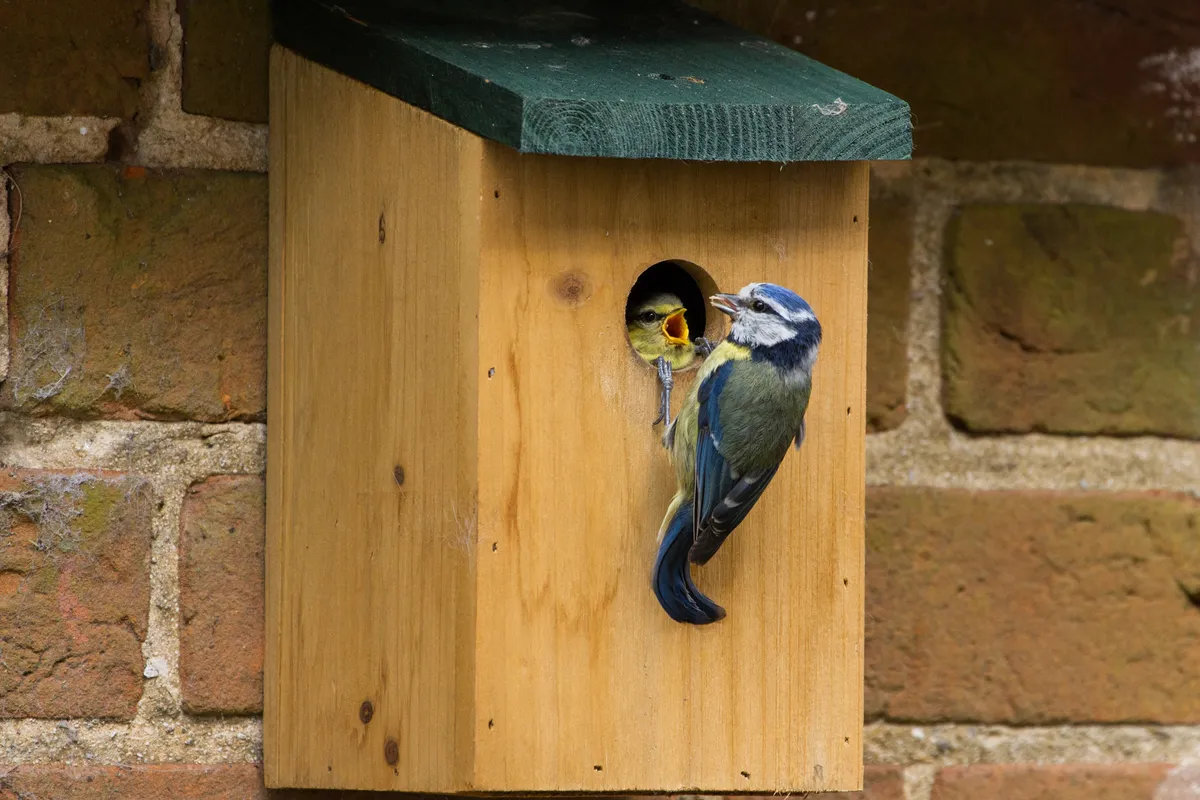
This nestbox is used by a variety of birds, including house sparrow, blue tit, great tit, coal tit, marsh tit, nuthatch and pied flycatcher. The size of the hole, and how it's positioned will vary for the different species (see below).
Open-fronted box
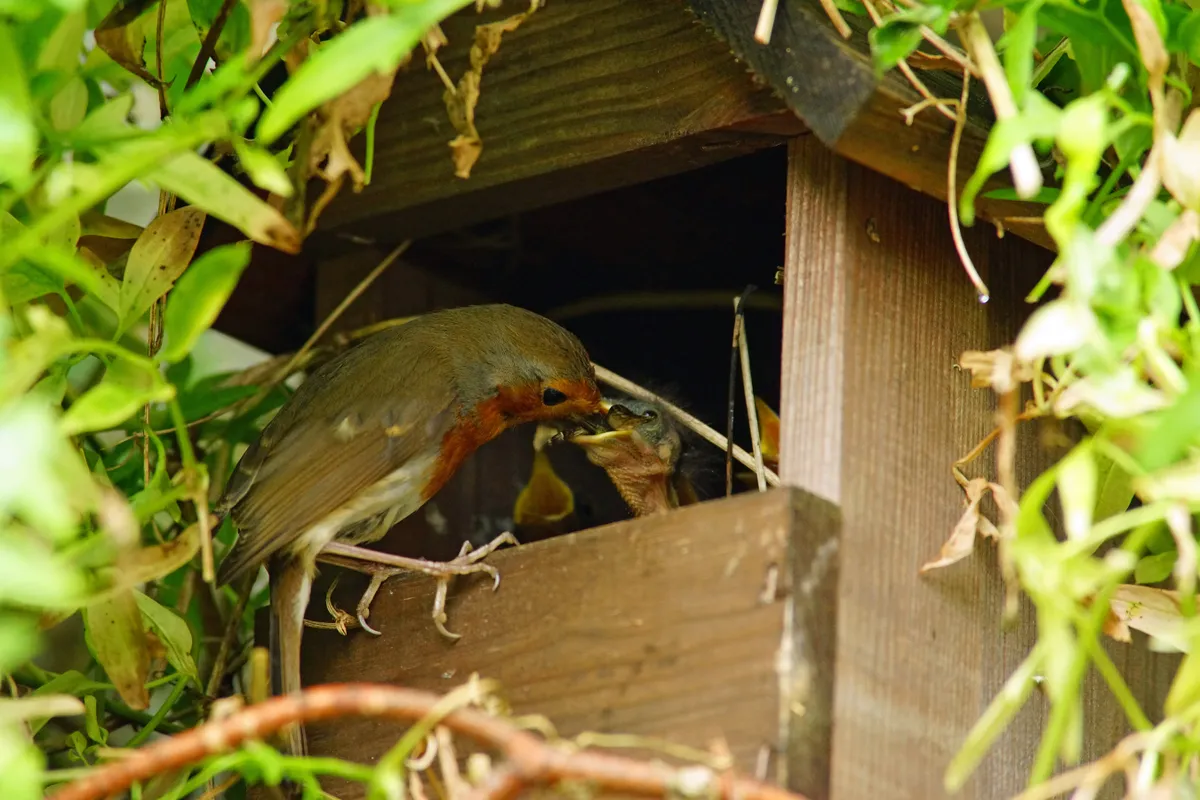
This style of box is great for birds that typically like to nest in dense undergrowth for protection, as well as those that favour larger or circular nests. The open front and deep base allow the nesting bird to sit securely within the box while still being able to easily observe its surroundings through the wide window, just as they otherwise would if nesting within the undergrowth.
Suitable for: robin, wren, pied wagtail, grey wagtail.
Ideal position: among ivy on a wall or tree (mimicking where birds may naturally choose to nest).
Raptor box
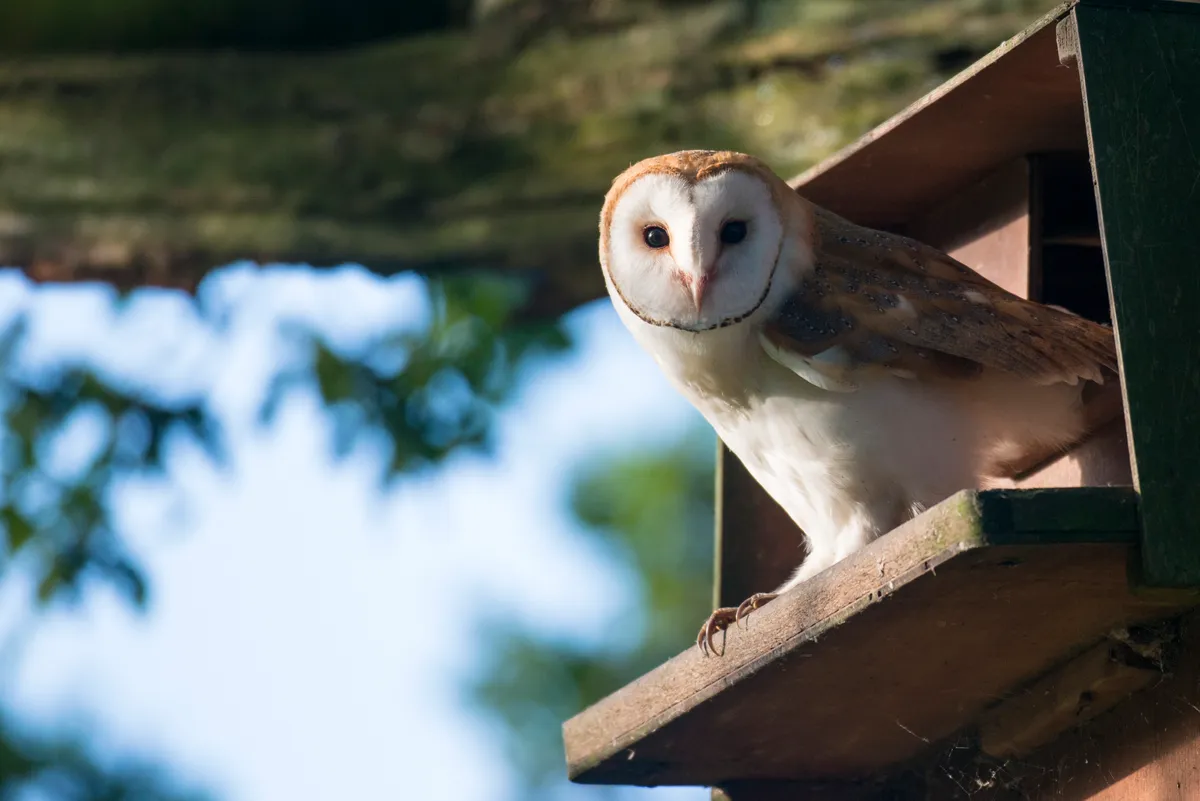
Birds of prey, like tawny owls and kestrels, may struggle to find suitable nesting locations. They often prefer to nest in trees near to open land, so if your garden offers these conditions you can put up a raptor box to help them. For tawny owls, you can either put up a horizontal box, which is slung beneath a sloping tree branch, or a vertical one, which is secured to a tree trunk. Kestrel boxes are similar but slightly wider and shallower.
Suitable for: tawny owl, kestrel, barn owl.
Ideal position: 3.5–5m (11 1⁄2–16ft) from the ground; under the cover of trees for owls; with open access on the fringes of a field for kestrels.
What to look out for when buying a bird nestbox
Most garden centres and local supplies sell a range of nestboxes, although shops at specialist nature reserves and nestbox websites offer a much more comprehensive choice. Before buying, you need to know what features to look out for in order to choose a resilient, long-lasting, easy-to-clean box. It’s also quite easy, and often cheaper, to make your own.
Materials
Most standard nestboxes are made of wood. The wood should be breathable, solid, and not treated with any chemicals. Look for the FSC label, which ensures the wood comes from well- managed forests.
An increasingly popular alternative is a blend of wood fibre and concrete, moulded into shape. It is heavier than wood but lasts longer and does not rot. You can also buy nestboxes set within concrete bricks, which can be built into new houses.
Avoid boxes with metal sides and roofs, as they absorb too much heat.
Roof
The ideal roof should allow water to run off the roof, keeping the box dry inside. It can be set at an angle with a central apex, or slope forwards, or even be curved. An overhanging roof also prevents water from getting into the entrance. A few designs come with a removable or hinged roof, which makes for easier cleaning.
Drainage and ventilation
Some boxes have small gaps in the base to allow air to circulate and for water and droppings to drain away. Since wood is breathable, this also allows air to pass in and out of the box, while adult birds will take care of the droppings.
Entrance holes
Some boxes come with metal guards around the holes to stop woodpeckers from drumming into the holes to make them bigger. If you want to adapt your box for smaller birds, you can buy metal plates with different-sized holes; these can also be useful to repair damaged holes.
Before buying a box, or when making your own, make sure that the hole will be the correct size for the birds you are hoping to attract.
26–30mm (1–11⁄4in) hole
Small birds feel secure in boxes with a hole of this size, knowing that larger species would struggle to enter the box (or even get their heads inside) to disturb their nest and young. Suitable for: tree sparrow, blue tit, marsh tit, coal tit.
Ideal position: 1.5–2m (5–61⁄2ft) above the ground.
28–38mm (11⁄4–11⁄2in) hole
Ideal for a variety of slightly larger garden birds, including great tits, which may otherwise attempt to use a smaller-holed box. By providing a variety of different hole sizes, you’ll reduce competition for space between species. Suitable for: nuthatch, pied flycatcher, great tit, house sparrow.
1 Ideal position: 1.5–2m (5–6 ⁄2ft) above the ground.
How to make a standard nestbox
This project keeps things simple, as you only need one plank of wood and a few tools. The design and proportions can be adapted depending on the tools and materials you have to hand.
For instance, if you don’t have a hole saw, you could instead halve the height of the front piece and use it to create an open-fronted box. If you aren’t comfortable using hand tools, ask a friend to help you hold the pieces steady as you screw them together.
